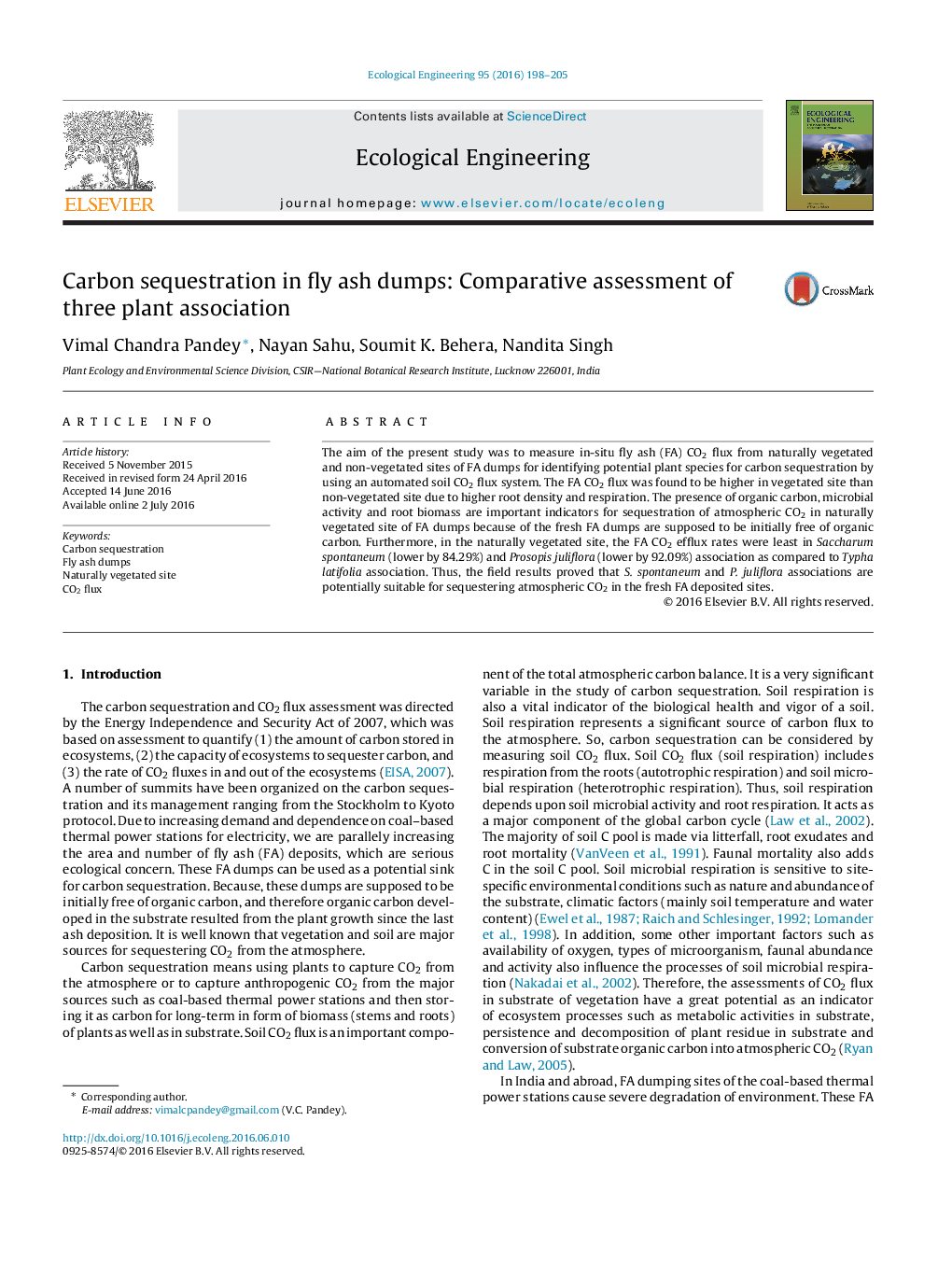| Article ID | Journal | Published Year | Pages | File Type |
|---|---|---|---|---|
| 4388444 | Ecological Engineering | 2016 | 8 Pages |
•We assessed fly ash (FA) CO2 flux in naturally grown plants on FA dumps.•FA CO2 efflux rates were least in S. spontaneum than other plant species.•S. spontaneum & P. juliflora are potentially suitable for C sequestration in FA dumps.•FA dump is a potential sink for C sequestration adjacent to thermal power plant.
The aim of the present study was to measure in-situ fly ash (FA) CO2 flux from naturally vegetated and non-vegetated sites of FA dumps for identifying potential plant species for carbon sequestration by using an automated soil CO2 flux system. The FA CO2 flux was found to be higher in vegetated site than non-vegetated site due to higher root density and respiration. The presence of organic carbon, microbial activity and root biomass are important indicators for sequestration of atmospheric CO2 in naturally vegetated site of FA dumps because of the fresh FA dumps are supposed to be initially free of organic carbon. Furthermore, in the naturally vegetated site, the FA CO2 efflux rates were least in Saccharum spontaneum (lower by 84.29%) and Prosopis juliflora (lower by 92.09%) association as compared to Typha latifolia association. Thus, the field results proved that S. spontaneum and P. juliflora associations are potentially suitable for sequestering atmospheric CO2 in the fresh FA deposited sites.
